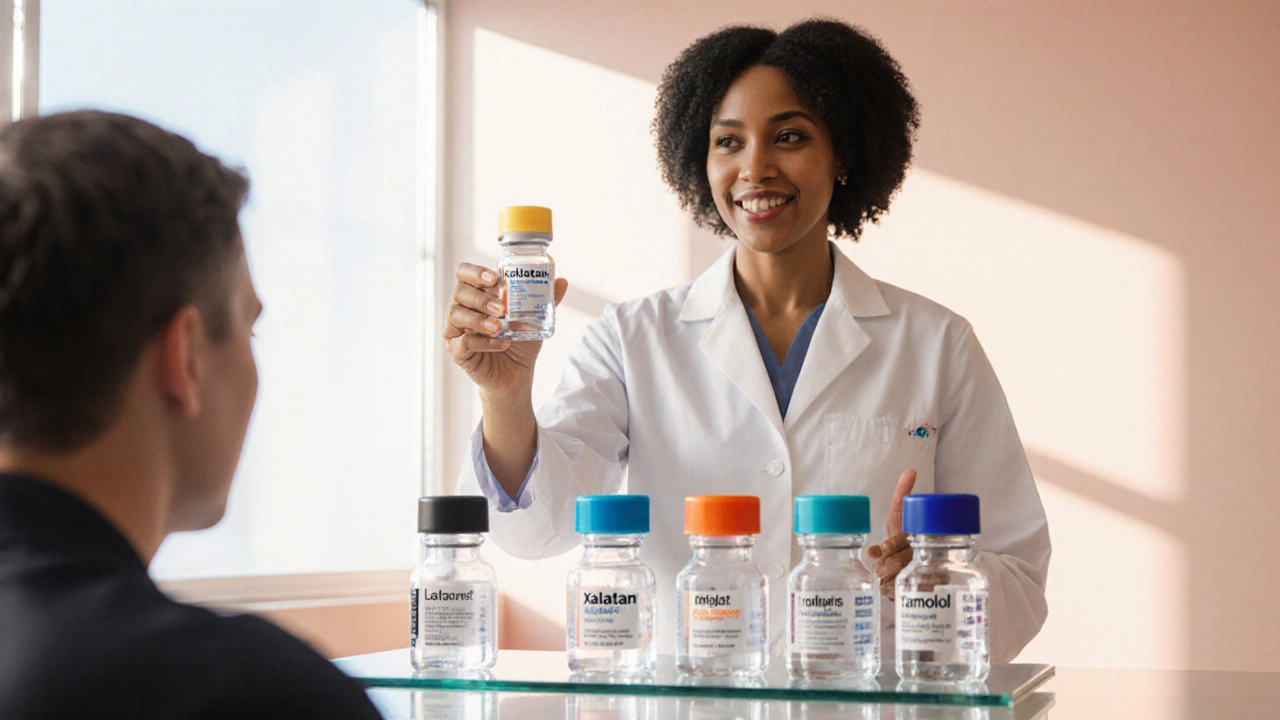Eye Pressure Drugs – What They Are and How They Work
When dealing with eye pressure drugs, medications designed to lower intraocular pressure and protect the optic nerve. Also known as ocular hypertension meds, they are the frontline defense against vision‑threatening conditions. These drugs are primarily prescribed for glaucoma, a disease where elevated intraocular pressure gradually damages the optic nerve and leads to irreversible sight loss. Understanding how each class works helps you choose the right regimen and avoid common pitfalls.
Key Drug Classes and How They Lower Pressure
The market groups eye pressure drugs into a few well‑studied families. Prostaglandin analogs are the most potent; they increase outflow of aqueous humor through the uveoscleral pathway, effectively pulling fluid out of the eye. Beta blocker eye drops work the opposite way by reducing fluid production inside the eye. Carbonic anhydrase inhibitors, another common class, also cut down fluid creation but through a different enzyme‑blocking mechanism. Each of these options targets a specific step in the fluid‑balance equation, and doctors often combine them for stronger pressure control.
Because eye pressure drugs interact with other health conditions, a thorough review of your medical history is essential. For instance, beta blockers can affect heart rate and asthma, while prostaglandin analogs may cause mild eye redness or darkening of the eyelid skin. Knowing these side‑effect patterns lets you weigh benefits against risks before starting therapy. If one class isn’t tolerable, switching to another or adding a low‑dose carbonic anhydrase inhibitor can keep pressure in the target range without compromising comfort.
Monitoring is just as critical as picking the right medication. Regular check‑ups with an eye‑care professional measure intraocular pressure using tonometry and assess optic nerve health with visual field testing. Most guidelines suggest aiming for a pressure at least 20‑30 % below your baseline, but the exact target depends on how advanced your glaucoma is and how much damage has already occurred. Consistent tracking helps catch subtle rises early, allowing you to adjust therapy before vision loss sets in.
Many patients wonder whether lifestyle changes can replace or boost drug therapy. While diet, exercise, and stress management support overall eye health, they rarely lower intraocular pressure enough on their own. However, staying hydrated, limiting caffeine, and protecting eyes from trauma can complement medication and reduce the need for dosage escalations. Think of these habits as an added safety net rather than a substitute for prescription drops.
If you’re new to eye pressure drugs, the first few weeks may feel confusing. Remember that eye pressure drugs often require a short adaptation period; you might notice a brief stinging sensation or blurred vision that fades as your eyes adjust. Keep a simple log of any new symptoms and share it with your doctor promptly. Early communication prevents small issues from becoming reasons to stop treatment altogether.
Insurance coverage and cost can also shape your treatment plan. Generic versions of many beta blockers and carbonic anhydrase inhibitors are widely available and can dramatically lower out‑of‑pocket expenses. Prostaglandin analogs, though highly effective, tend to be pricier; some pharmacies offer discount programs that make them affordable. Discuss options with your pharmacist to find the best balance between efficacy and budget.
Below you’ll find a curated collection of articles that dive deeper into each drug class, compare side‑effect profiles, and offer practical buying tips. Whether you’re weighing a switch to a generic, curious about the latest prostaglandin formulation, or need advice on safe online purchases, the posts ahead give clear, actionable information to help you manage eye pressure confidently.

